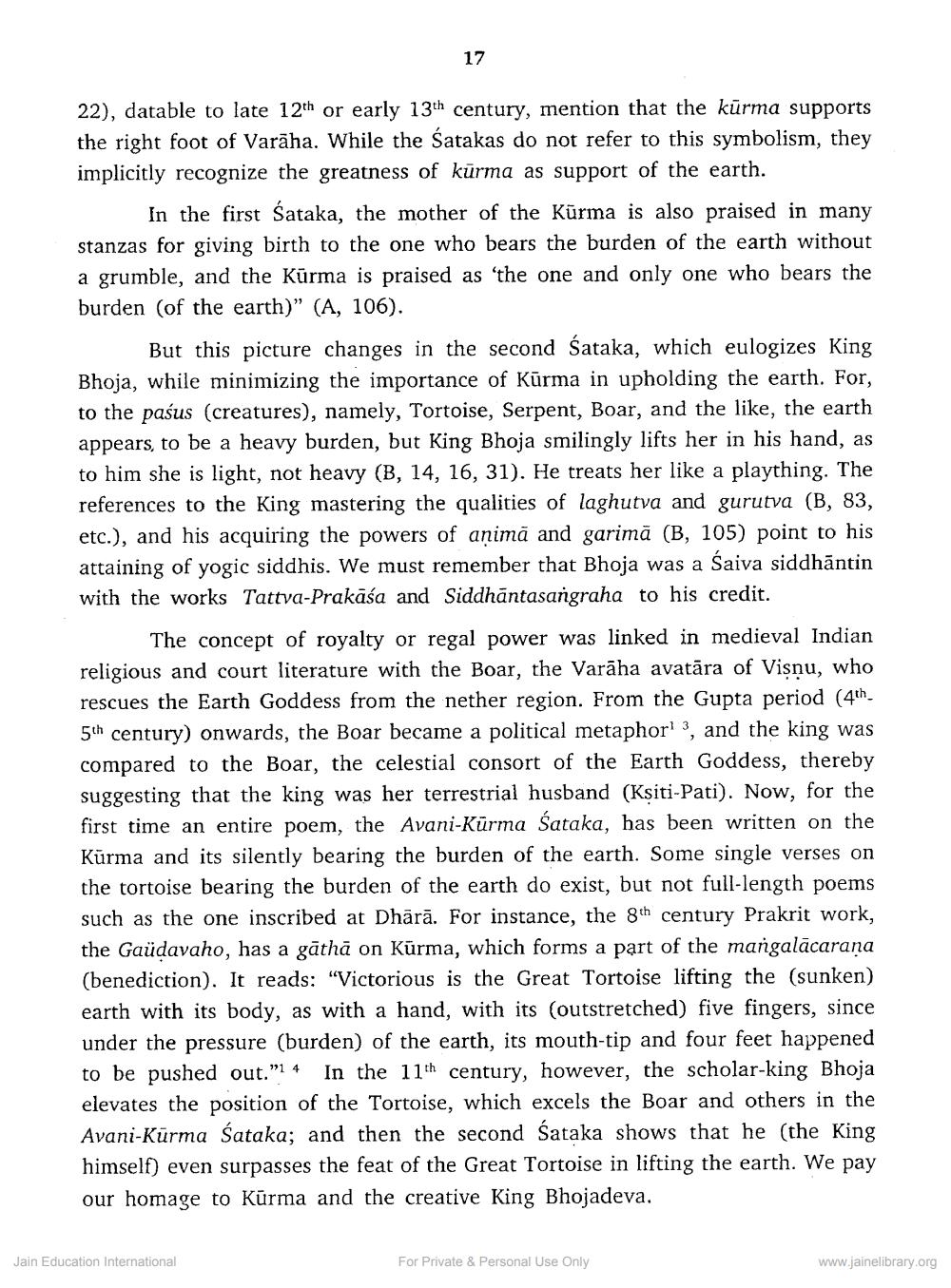________________
17
22), datable to late 12th or early 13th century, mention that the kūrma supports the right foot of Varāha. While the Satakas do not refer to this symbolism, they implicitly recognize the greatness of kūrma as support of the earth.
In the first Śataka, the mother of the Kūrma is also praised in many stanzas for giving birth to the one who bears the burden of the earth without a grumble, and the Kūrma is praised as 'the one and only one who bears the burden (of the earth)” (A, 106).
But this picture changes in the second Śataka, which eulogizes King Bhoja, while minimizing the importance of Kūrma in upholding the earth. For, to the paśus (creatures), namely, Tortoise, Serpent, Boar, and the like, the earth appears to be a heavy burden, but King Bhoja smilingly lifts her in his hand, as to him she is light, not heavy (B, 14, 16, 31). He treats her like a plaything. The references to the King mastering the qualities of laghutva and gurutva (B, 83, etc.), and his acquiring the powers of animā and garimā (B, 105) point to his attaining of yogic siddhis. We must remember that Bhoja was a Saiva siddhāntin with the works Tattva-Prakāśa and Siddhantasangraha to his credit.
The concept of royalty or regal power was linked in medieval Indian religious and court literature with the Boar, the Varāha avatāra of Visnu, who rescues the Earth Goddess from the nether region. From the Gupta period (4th 5th century) onwards, the Boar became a political metaphor 3, and the king was compared to the Boar, the celestial consort of the Earth Goddess, thereby suggesting that the king was her terrestrial husband (Kșiti-Pati). Now, for the first time an entire poem, the Avani-Kūrma Śataka, has been written on the Kūrma and its silently bearing the burden of the earth. Some single verses on the tortoise bearing the burden of the earth do exist, but not full-length poems such as the one inscribed at Dhārā. For instance, the 8th century Prakrit work, the Gaüdavaho, has a gāthā on Kūrma, which forms a part of the mangalācarana (benediction). It reads: "Victorious is the Great Tortoise lifting the (sunken) earth with its body, as with a hand, with its (outstretched) five fingers, since under the pressure (burden) of the earth, its mouth-tip and four feet happened to be pushed out."1 4 In the 11th century, however, the scholar-king Bhoja elevates the position of the Tortoise, which excels the Boar and others in the Avani-Kürma Sataka; and then the second Śataka shows that he (the King himself) even surpasses the feat of the Great Tortoise in lifting the earth. We pay our homage to Kūrma and the creative King Bhojadeva,
Jain Education International
For Private & Personal Use Only
www.jainelibrary.org




